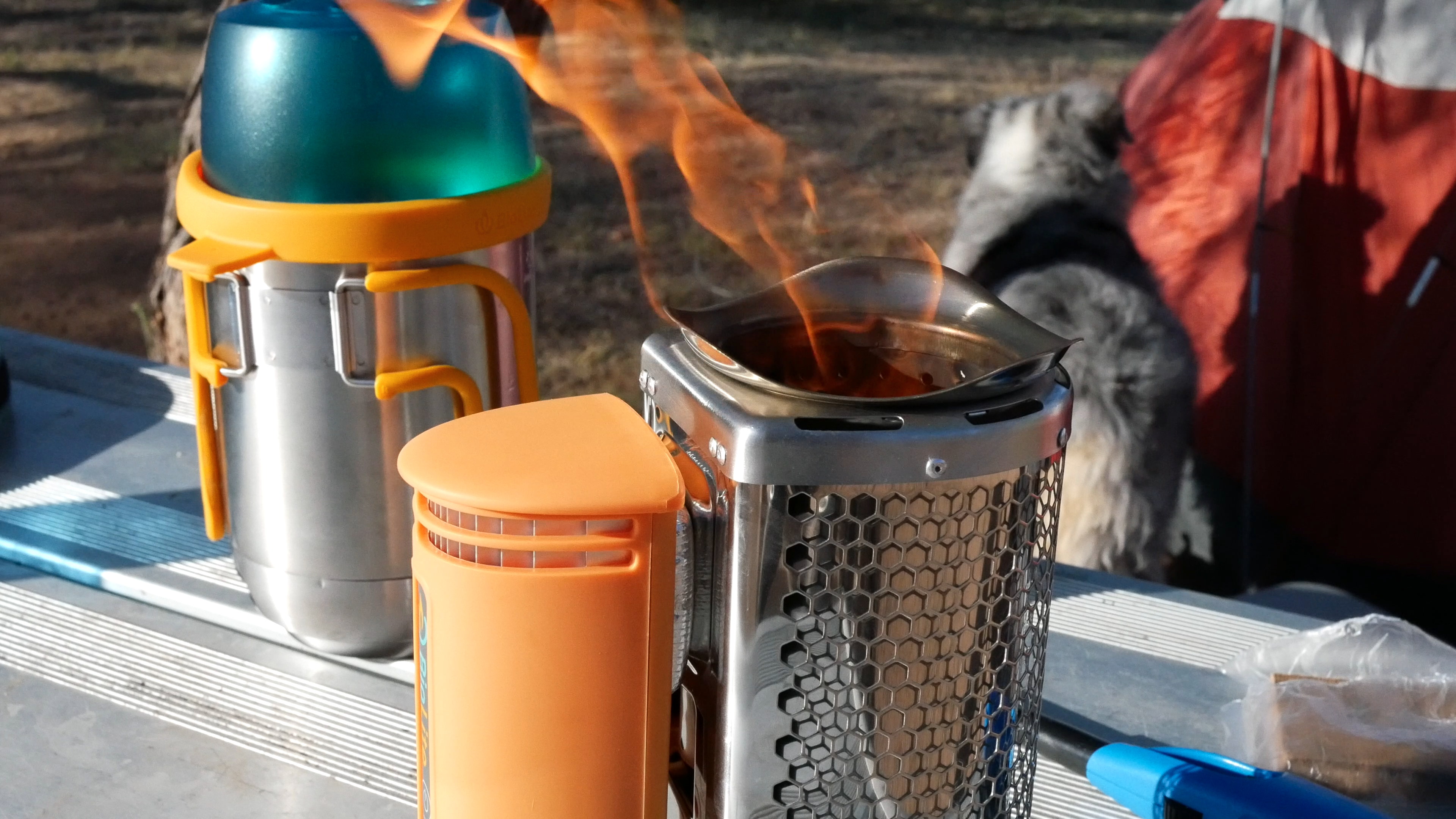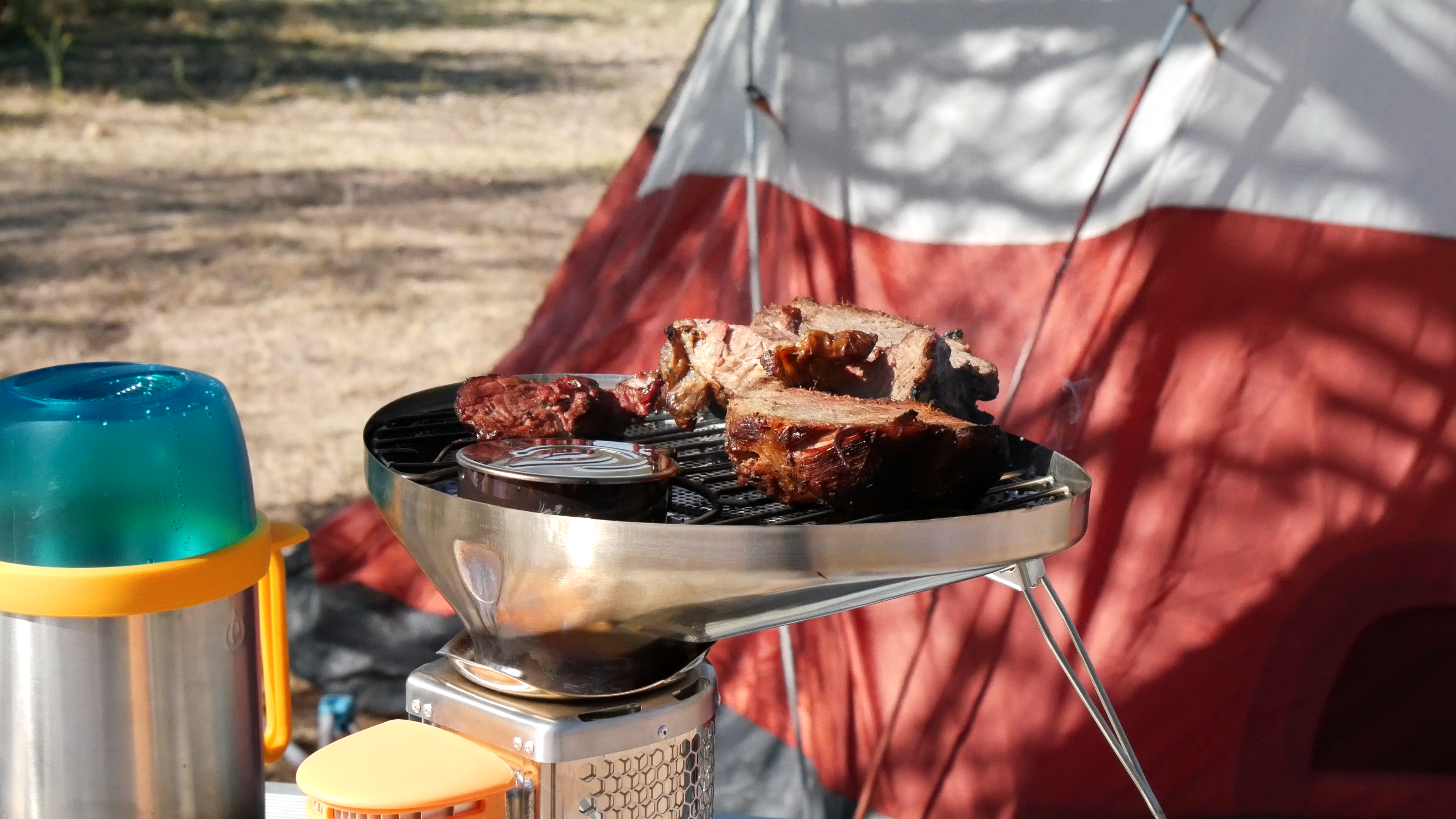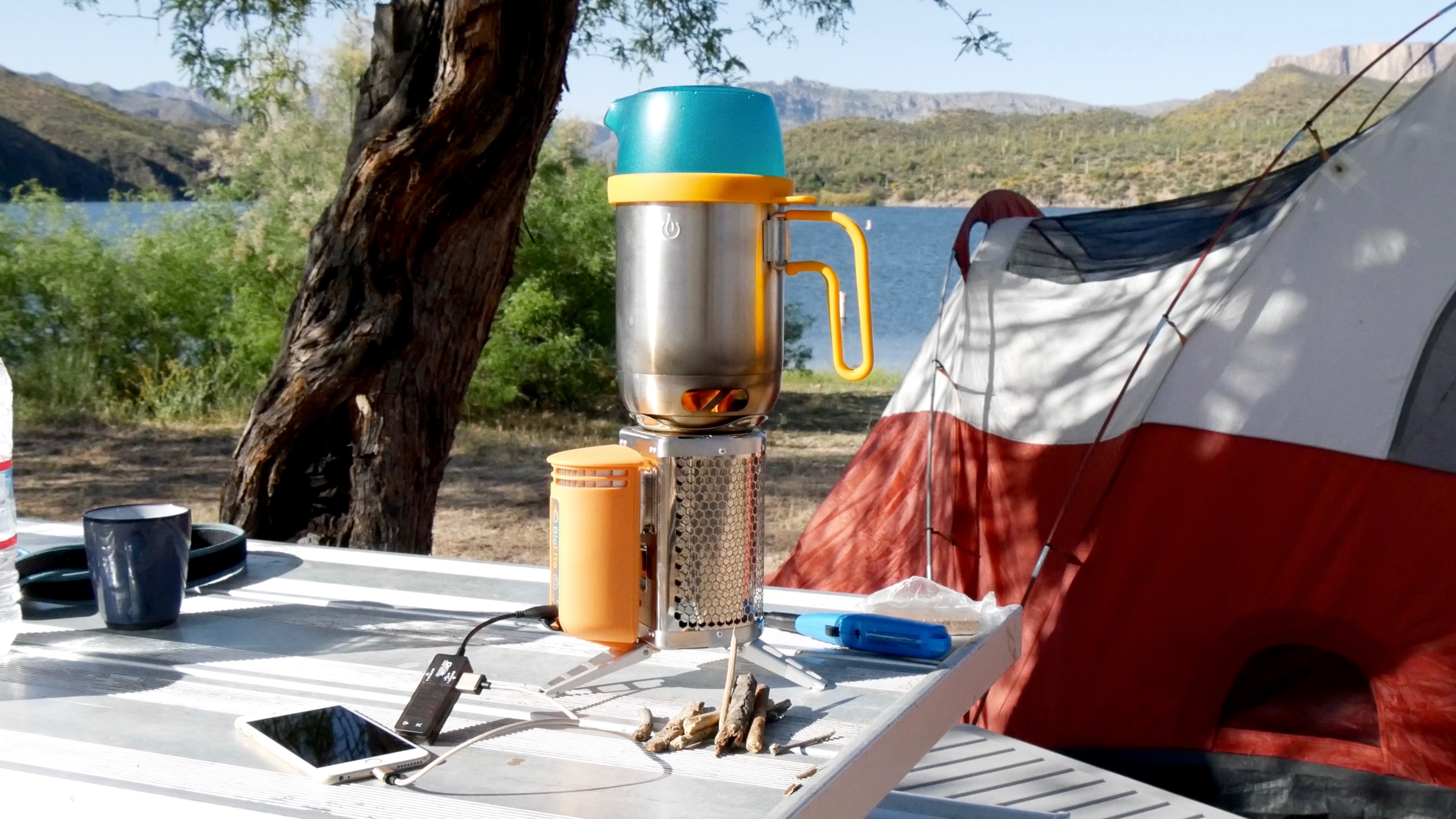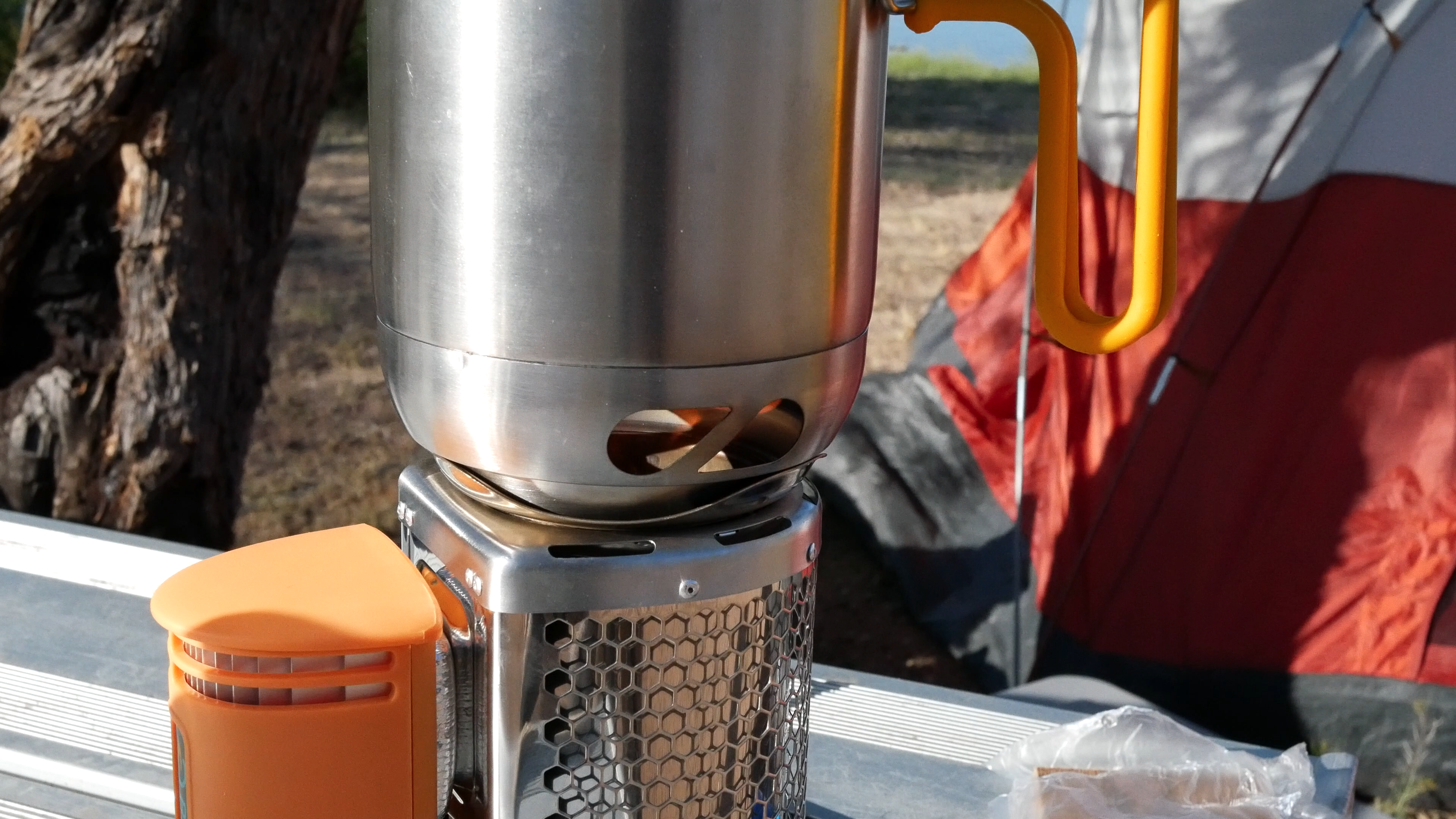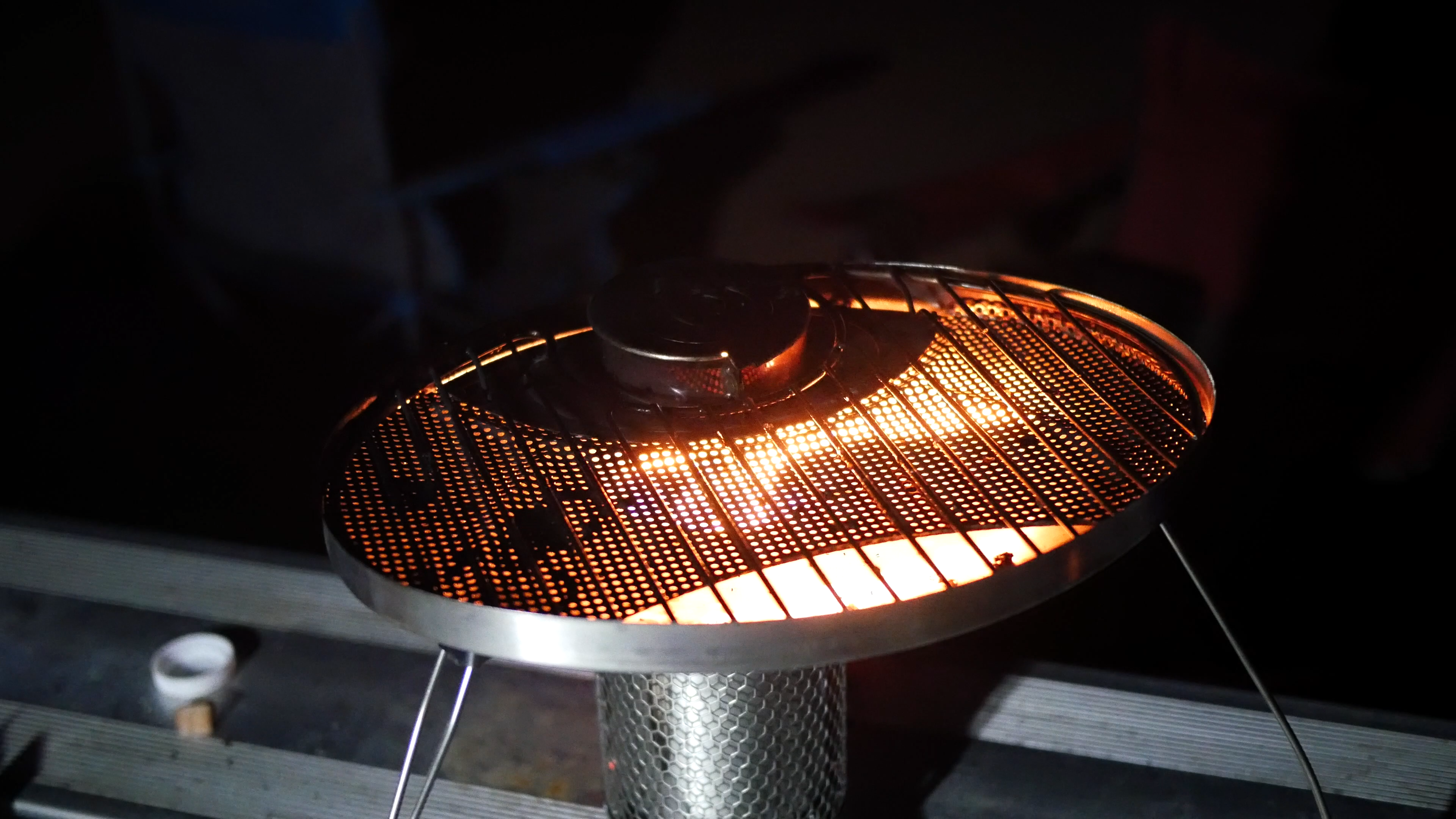Remember BioLite? The company that took the outdoor market by storm a few years ago with a camp stove that ran on twigs? Well as it turns out, the company hasn’t just been resting on its laurels since then. Over the past couple years, BioLite has released a number of upgrades and attachments — including portable electric grill that’s big enough to cook for two, a KettlePot to boil water, and a portable USB-powered FlexLight to illuminate everything.
Using the BioLite CampStove couldn’t be easier. Just gather twigs (which you’ll find laying around at just about every campsite ever) and place them in the stove. Light a fire starter (BioLite provides a pack) and place it in the stove. When the fire reaches the appropriate temperature, the BioLite CampStove uses generated electricity to power a small fan, increasing the amount of air to the fire, and therefore generating more heat and electricity. When the light above the USB port on the yellow generator turns green, you’re ready to start charging your devices.
To kick things up a notch and run the stove’s fan even faster, just press the button one more time. This gets the BioLite CampStove hot enough that it’s on par with white gas stoves. We were really impressed with the amount of heat it generated, and at such high temperatures, almost no smoke was given off, making this CampStove perfect for cooking.
The grill turned out to be great for cooking, and we were able to cook meats, veggies, and sides — and they all came out well. The only drawback was cooking was limited to one surface, making it challenging to cook in high winds, or to cook thicker meats thoroughly and consistently. We got around this by wrapping the grill in aluminum foil to reflect the heat around what we were cooking, but a lid or reflector dish would be a welcomed improvement.
When it comes to boiling water, BioLite’s innovative new KettlePot is incredibly fast and efficient. The bottom of the kettle fits right onto the CampStove’s pot stand, and deflects the flames around its bottom surface. BioLite claims that you can boil a liter of water in 4.5 minutes, and we have no reason to doubt that claim. Every morning we had hot water for coffee, and we’d use our leftover hot water to boil eggs.
When the CampStove was ready to charge, it put out around 3/4 of an amp of current. That’s a little less than what you’ll get from a basic wall charger (which puts out 1 amp for reference), but it was enough to top off our iPhone 6S Plus. We could get about 20% of charge on our smartphone from roughly an hour of cooking –which isn’t too much– but it’s still pretty amazing to be pulling that much usable electricity from nothing but twigs.
